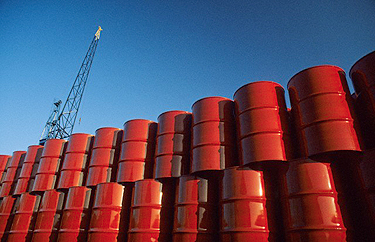The Organization of Petroleum Exporting Countries agreed to production limits for most of its members at a meeting in November and brought 11 other nations on board with the deal in December. Saudi Arabia, OPEC’s biggest producer, agreed to cut output by 486,000 barrels a day while Iraq said it would cut 210,000 barrels a day. Iran was permitted to increase output by 90,000 barrels a day, according to the OPEC accord.
Iran has boosted production in part due to the end of sanctions restricting its oil sales in January 2016, while Saudi Arabia has made more than its share of output cuts, said Ruehl, who previously worked as BP Plc’s chief economist. ADIA is the sovereign wealth fund in Abu Dhabi, capital of the United Arab Emirates and holder of most of the country’s oil reserves.
Saudi Arabia knew it would lose share because Iran’s production was on the rebound, said Robin Mills, founder of Dubai-based consultant Qamar Energy. “The Saudis agreed to production cuts at a time when Iranian production was at a high.”
Brent crude slipped 20 cents, or 0.4 percent, to $51.62 a barrel at 9:29 a.m. in Dubai. The the global benchmark plunged from its 2014 high of more than $115 a barrel amid a global supply glut.
There seems to be a consensus that the effort to curb supply should be extended, Saudi Minister of Energy and Industry Khalid Al-Falih told reporters Wednesday in Baku, Azerbaijan. Al-Falih said he’ll talk with his Russian counterpart Alexander Novak by phone this week and meet him within the next two weeks.
Saudi Arabia cut production from about 10.5 million barrels a day in December to as low as 9.87 million daily in January and 10 million a day last month, according to data compiled by Bloomberg. Iran’s output rose to 3.8 million barrels a day in January, the highest since April 2010, the data show. Iran insisted it needed to recover its market share following years of sanctions that penalized its oil industry. Neighboring Iraq pumped 4.43 million barrels a day in March, down 200,000 barrels for the year, according to the data.
The struggle over market share is most pronounced in Asia, according to Mills and Edward Bell, commodities analyst at Dubai-based lender Emirates NBD PJSC. Iran and Iraq increased crude sales to China last month, while Saudi Arabia slipped behind Russia and Angola as the largest suppliers to the nation, data released Tuesday by the General Administration of Customs show.
“The Saudis are losing out because other countries are able to squeeze out more production,” Bell of Emirates NBD said. Saudi Arabia is cutting crude pricing to Asia to hold on to its share, Bell said. The kingdom will likely release its official crude pricing for June next week, with most other regional producers following.
“The OPEC market share battle hasn’t gone away,” he said.
More about: #SaudiArabia #Iran #Iraq #oil















































